|
During your 15 minutes speech therapy weekday practice you can play 2 or 3 games or repeat the same activity each time. Choose what interests your child. All you need are your speech therapy practice cards. Tip: Have a special box of toys used just for speech therapy practice to keep your child’s interest and motivation high. 1) Mailbox Posting: Cut of posting hole into the lid of a shoe box to make it like a mail box. Get your child to turn over a card, say what it is and then post it into the mailbox. 2) Cars: Spread the cards out to look like a road. Drive matchbox cars over the cards. Have your child say each word before they drive the car over it. 3) Sandpit Hide ‘n’ Seek: Do your therapy outside in the sandpit on a nice day. Laminate the cards and cut them out so you can hide them in the sandpit and your child has to say the word when they find the card. Alternatively, fill a deep tray or bowl with rice and hide the cards in the rice. 4) Hungry Puppet: Spread the pictures out on the floor or table, and have a puppet eat each card as it is said by your child. 5) I-pad Game: Say 5-10 pictures (e.g. eye, fie, vie, sty, lie) then have a turn on a quick game on the i-pad. Repeat this activity until all the pictures have been said. 6) Clothes Line: Peg each picture onto a toy washing line. Your child names each picture before he/she pegs them on the line. 7) Spot-light: Stick the pictures on your child’s bedroom wall or ceiling, and ‘spot’ them with a torch at night, while lying in bed. You can spotlight your child when they’re saying the word. 8) Hide ‘n’ Seek Cards: Hide the cards around the room. Each time your child finds a card they tell you what’s on the card. 9) Pop-Up Pirate or similar game: Put the swords out on the pictures. Your child has to say the picture before they get to put the sword in. 10) Ten Pin Bowling: Use Blue Tac to stick the pictures to each pin. Your child has to roll the ball and knock over the pins. He/She says the name of the picture on the pins knocked over. By Sarah Creagh, Private Speech Pathologist Speech Smart Therapy STRATEGIES TO ENCOURAGE SPEECH DEVELOPMENT
Your speech pathologist can provide you with specific details on how to help your child produce particular sounds. However, these are some general strategies to use to help a child who has unclear speech. It will give you some general ideas before seeing a Speech Therapist. Get face to face Get down to your child’s level, so your child can see your mouth. Make sure your child is looking at your face when you model a word. It is difficult to copy words or sounds just by listening. It helps if your child can see how you move your lips, tongue and jaw to make the sound. Slow down Speak in a slow but natural way so your child is encouraged to speak at the same rate. Slowing down your speech when you are talking to your child will allow your child to hear and see all of the sounds involved in producing a word. This is especially important when words have more than one syllable and where there are lots of sounds to listen to. It also encourages your child to speak at a slower rate. Speaking quickly requires more refined coordination. Emphasise a sound Slightly exaggerate the sound you wish your child to say correctly, while still saying the word naturally. It will make the sound stand out a little more so they can clearly hear it. Instead of asking your child to repeat the word, model the word back emphasizing the sound in error correctly (e.g. Your child says, “I want the big tar”, you can say, “You want the big Car?”. Break up longer words into syllables and/or smaller words This can help your child say longer words that are tricky for them. This strategy is best used for words they have heard before and understand the meaning of. It may be easier for your child to break the word into parts and to slowly put the parts back together. Get them to watch you say it a few times before asking them to try to copy you. For example, if your child can say ‘flower’ but struggles to say the longer word ‘cauliflower’, try breaking it up into: Caul … Caul-i …. Caul-i-flower (and then show them how to put it back together slowly) …Cauliflower. For example: The word ‘kangaroo’ can be broken up into: Kang … Kang-a … Kang-a-roo … (and then put back together slowly) … Kangaroo Self monitoring and offering choices Only use this strategy if your child can say the sound correctly in some words, recognise when they have said a word the wrong way and are able to fix it up easily. If they aren’t able to say the sound, offering choices would not be helpful. This skill often develops around the age of 4 years. For example, if your child has trouble saying the ‘k’ sound at the start of some words but can sometimes say it correctly you might ask them, did you mean ‘tea’ or ‘key’ if they’ve said, “here are your teas” for ‘here are your keys’. As they get really good at fixing up their words, try to encourage your child to notice when they have said the wrong sound. Gently remind them when they forget to use the right sound and ask them to fix it up. Keep this a positive and fun experience for your child. Praise all attempts by your child, even if it was not correct. For example: “Great try or I can see you are trying very hard.” Listening games Read books to your child that are loaded with the sound they are having trouble saying. For example, if they’re having trouble with the ‘sh’ sound read them ‘The Green Sheep’ book every night for a week to tune their ear into hearing how that sound is used in words. Sometimes pause before you say the word ‘sheep’ while you are reading, wait for them to look up at your face to see why you have paused, continue reading once they’ve looked up at your face. This will ensure they are seeing and hearing how to say the target sound in words that you want them to focus on. While talking with your child, make an error in your own speech to see if your child notices. For example: if your child has trouble with the sound ‘k’, you could say ‘tup please’ for ‘cup please’ If your child notices the error, give them praise. If you child does not notice the error, point it out yourself. You could say ‘Whoops. I said ‘tup’ instead of cup!’ Model If your child says the wrong sound in a word (“tite” instead of kite), get them to look at you and say the word to them correctly. For example, you could say ‘Yes that is a kite. It’s a blue kite.’ Say the word with the correct sound and try to use the word many times in the conversation or during a play activity so they can see how to say it the right way. You don’t need to ask the child to repeat it or add further explanation – they are learning how to say it just by watching and hearing you say it. Sometimes a child needs to hear and see how to say a word many times (e.g. 30+ times) before they feel confident to give it a go themselves. Praise self-corrections Give specific praise to children when you notice self corrections (fix ups without your prompting). For example: you could say “You fixed that one up, super talking! First you said ‘dun’ and then you fixed it up all by yourself and said ‘sun”. Important advice: Be aware of the child’s errors and what is expected for his or her age. Expect your child to make some mistakes, as learning to say all speech sounds correctly takes time. In young children learning to speak, speech errors are quite common. By 3 years of age you should be able to understand your child at least 75% of the time. Promote good hearing. Good hearing is essential for the development of normal articulation. If you have concerns with your child’s speech skills, it is always a good idea to have his/her hearing assessed. If you are concerned about your child’s speech production please contact Speech Smart Therapy for an assessment, we are here to help! Sarah Creagh Private Speech Pathologist Speech Smart Therapy
Your baby may only make a few sounds to start with, but as he/she gets older he/she is able to make more and more sounds. From as young as 3 months babies start to take turns in vocalising (making voice sounds) and make two or more speech sounds. From six months an average child can make four or more distinct sounds including vowels and consonants (e.g. p, m, d). Initially they are likely to repeat sounds when babbling (e.g. bababa, dada) followed by varying their babble and playing with sounds more (e.g. badaga, gagada). Below are tips for helping develop your babies skills in 'practicing' making sounds and learning to talk. Imitate Sounds Your Baby MakesPlayfully imitate the sounds your baby has just produced or say the word they may be trying to use (do this immediately after your baby has said the sound). Encourage Your Child to Make More SoundsPlay games and activities that encourage lots of sounds. Listen to your baby and take note of what activities he/she likes to make sounds to and what time of day he/she is most talkative. For example, bath time, meal time or just after he/she wakes up may be great times for making sounds. Exciting toys (e.g. pop up or spinning toys) or social games (e.g. peek-a-boo) can be great for encouraging your child to make sounds. Sitting in front of a large mirror and making silly faces and noises together is another activity that encourages many babies to make sounds. Take Turns Making SoundsYour baby will learn to take turns in making sounds when you copy a sound that your baby has already made. Reward your baby if he/she imitates the sound back (e.g. smiling, cuddling, clapping). Repeat the sound again to help encourage your baby to take turns to produce a sound. Pause and wait for them to take another turn. If they do, again reward them with a smile or cuddle. Introduce New SoundsOnce your baby is able to take simple turns making sounds they know, you can start to encourage your baby to copy new sounds. It may be easiest to start with simple turn taking using a sound they know and then introduce a new sound (e.g. 'baba' (sound your child can can say) and then 'dada' (a sound your child doesn't know). Keep new sounds simple (e.g. p, t, d, n, m, h, g, k, ar, oo, ee). Imitating 'Play' SoundsOnce your child is starting to make a variety of sounds and sound sequences, start to use lots of sounds during 'play'. 'Play' sounds are often easier to imitate than real words e.g. 'Mmmm' when eating something yummy, 'woof' 'woof' when looking at a dog together, 'wee' when going on a swing or down a slide, 'oh oh' when something drops, ' Grrr' when pretending to be a lion, 'brmm, brmm' when pushing a toy car, 'pop' when popping bubbles. Use 'play' sounds lots when doing something that your child really likes. For example, everybody knew my little niece loved dogs because she'd get so excited every time she saw one. Her mum would say "woof woof", whenever she pointed at a dog excitedly. Not surprisingly this was one of her very first words! Written By:
Sarah Creagh Speech Pathologist Speech Smart Therapy 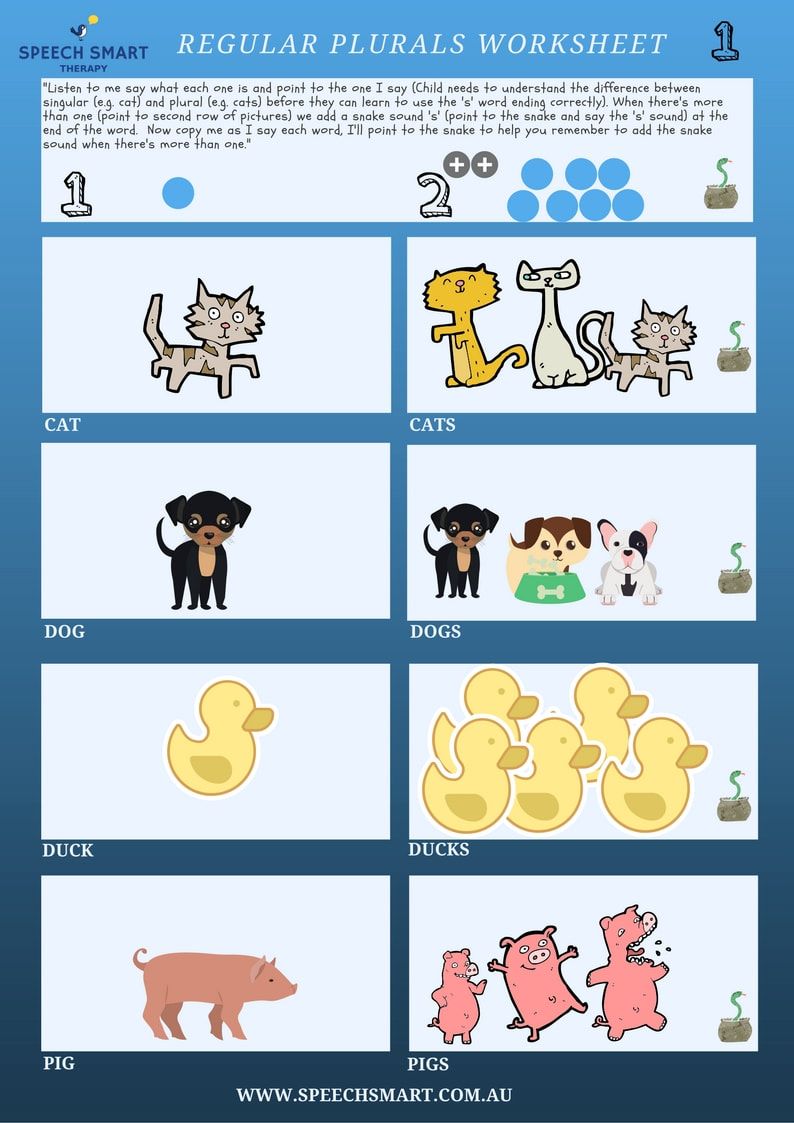 Here are some regular plurals worksheets you can use to teach understanding and use of regular plurals. Children with speech and language delays often have trouble adding the 's' or 'z' sounds at the ends of words to indicate 'more than one' or 'many'. Many children develop this knowledge and skill by 3 years of age. However, some children may require additional support to understand and use these word ending. Parents, teachers and speech pathologists may find this a useful resource to use to support children needing a little extra support with regular plurals. Here are some easy steps for teaching regular plurals: Step 1: Check Understanding: The first step is to check the child can understand the difference between singular (e.g. cat) verses plural noun (e.g. cats) use by identifying the correct pictures when you say them. If they have trouble doing this it will be important to do further work on their understanding of singular verses plural noun understanding, before you work on their production/use. Use the visual supports at the top of each worksheet when asking the child to point to the one you say. For example, point to the number 1 and then the single blue dot when you say, "Find one cat.", point to the 7 blue dots and then the snake symbol when you say, "Find many cats" or "Find three cats". Make sure you point to the snake symbol at the same time as you say the 's' sound or the buzzy bee symbol at the same time as you say the 'z' sound at the end of the target words. This will help support the child's awareness of the use of this sound to indicate 'more than one'. Get the child to use a white board marker to tick the picture, once they've found the right picture - most kids love doing this! To make this task a little bit trickier try without the visual support at the top of the page and remove the quantity word clues (i.e. 1, 2, many) from your instructions but continue to point to the snake sound or the buzzy bee sound as you say the sound at the end of the plural noun. For example, "find a cat", next "find the cats". Step 2: Correct use of singular v's plurals: Once your child can easily point to the correct picture when named move onto their production by getting them to copy you. For example, you may say to your child, "When there's more than 1 (point to the 7 dots at the top of the second row) we add a snake sound 'sss' (point to the snake at the same time that you say the 's' sound) at the end of the word. Now copy me as I say each word, I'll point to the snake to help you remember to add the snake sound when there's more than one." Once your child's getting really good, see if they can tell about each picture using the correct word ending 's' or 'z' to tell when there's more than one, all on their own. It may help to get them to point to the 'snake sound symbol' and 'buzzing bee sound' symbol to remind them when they need to use these sounds at the end of the word. If your child seems to be helped by the use of quantity words (e.g. 1, 2, 3, many), use the plural noun in a carrier phrase like "I see ...". Your child could say, "I see one cat." "I see three cats." Keep doing this until your child can consistently use plural nouns in simple sentences to tell when there is more than one of something. Step 3: Generalisation of Plural Use: Now that your child is starting to use plurals correctly we want to make sure this skill transfers to everyday situation. This means talking about 'one' verses 'many' in everyday situations. You're child could help you sort the washing out e.g. You could instruct your child "Put one jumper here. Put three jumpers here. Then ask them to tell you what's in each pile to encourage them to say "here is one jumper, here are three jumpers." Reading books and talking about what's in the pictures is another great way to encourage this skill to transfer to everyday situations. Ask your child questions like, "what do you see here?" to see if they include the plural 's' or 'z' endings. Give heaps of praise when they remember to use the ending correctly and gently remind them if they forget by either scaffolding the right way to say the sentence, "oh, there's three cats", and/or reminding them to use the snake sound at the end, "three cats", we need to put the snake sound at the end of "catsss", can you tell me again. Let me know if you like this resource. Thanks heaps!
Have Fun With Playdough This Easter Holidays!I use playdough all the time with young kids to support communication development. It's a great activity to get communication happening and there's lots kids can learn through playdough! Having a set of good cookie or playdough cutters is great for modelling lots of different vocabulary targets (e.g. house, butterfly, plane) and working on early categorisation skills (e.g. Lets put all the vehicles over here and all the animals over here). Playdough play is also great for encouraging use of action words (e.g. cutting, pushing, rolling) and early concept words (e.g. big/little, long/short - "I've rolled a big ball. Your ball is li____?", "My snake is long, your snake is sh____."). You can use playdough for making many different shapes and objects to talk about such as making a persons body or face out of playdough (e.g. model the names of different body parts as you talk about what you are making, such as "To make a person we need a body, head, legs, and arms. What else do we need?"). Try making different animals such as a snake for modelling different animal noises and early sound play (e.g. "Snake says SSSsssss"). Playdough is a great sensory activity and can also be used to encourage development of early social skills such as turn taking, joint attention, sharing, making a choice, requesting, asking for help. It's a great activity to keep young kids occupied on a play date too. They love to get in and help make it and see the colours go through the dough. I like to make my own playdough for peace of mind that if they decide to taste it (lets face it, most kids give it a taste test at some stage) there aren't any hidden nasties. Joan's Playdough Recipe:
Sarah Creagh |
Author - Sarah CreaghI'm a speech pathologist with a passion for working in partnership with parents to support children to reach their maximum potential. Archives
September 2018
Categories
All
|
||||||||||||||||||||||||||||||||||

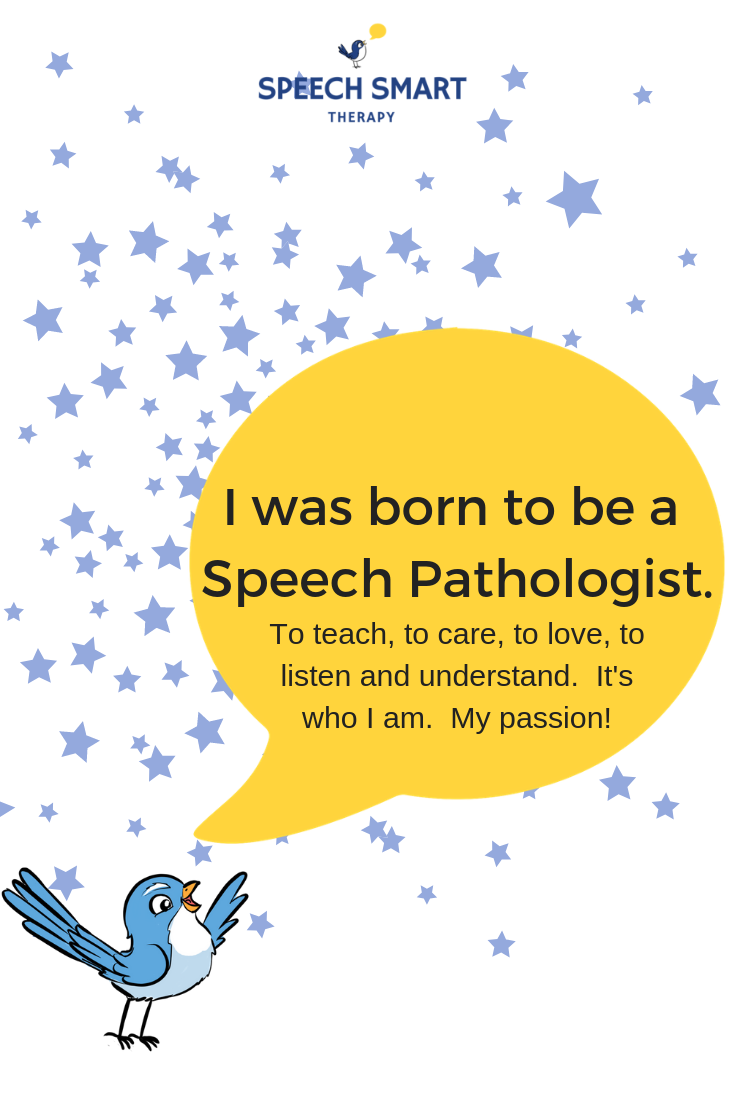
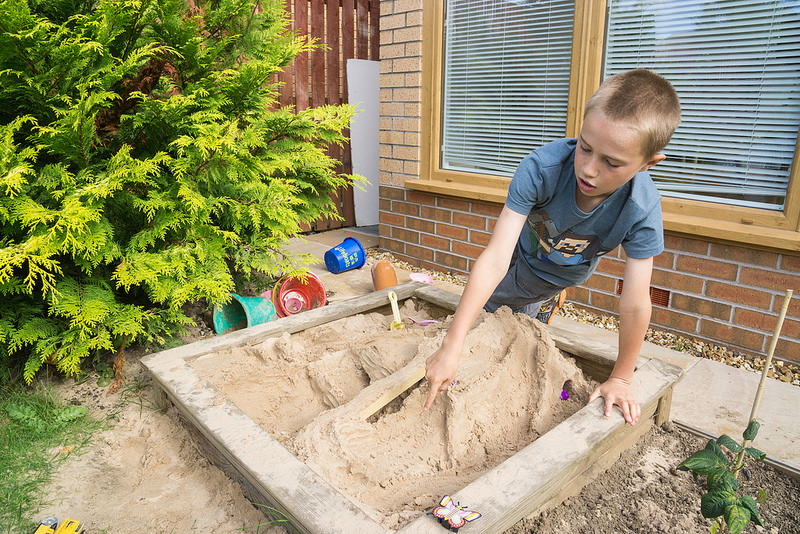

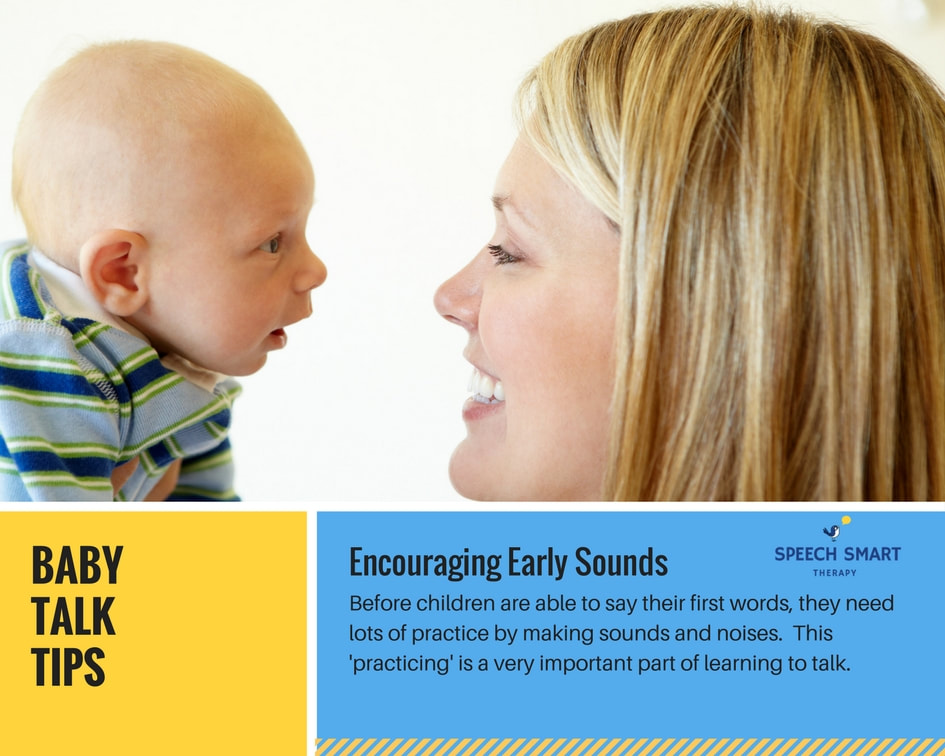



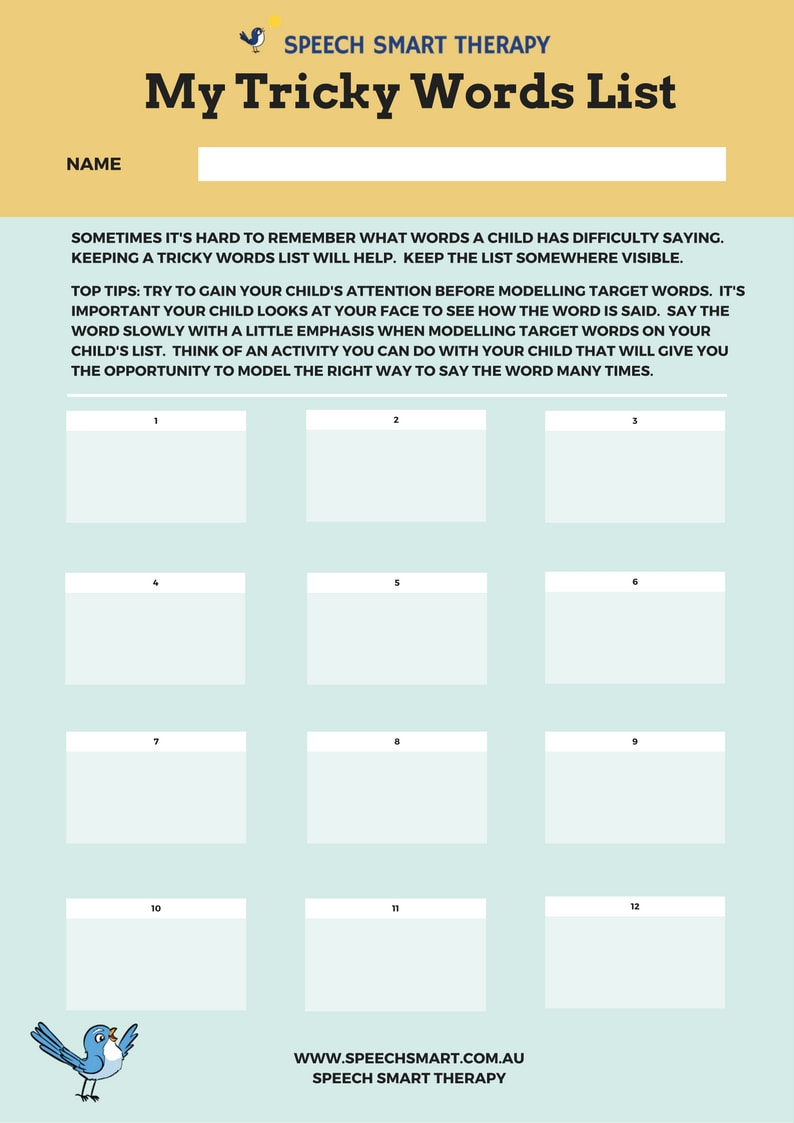
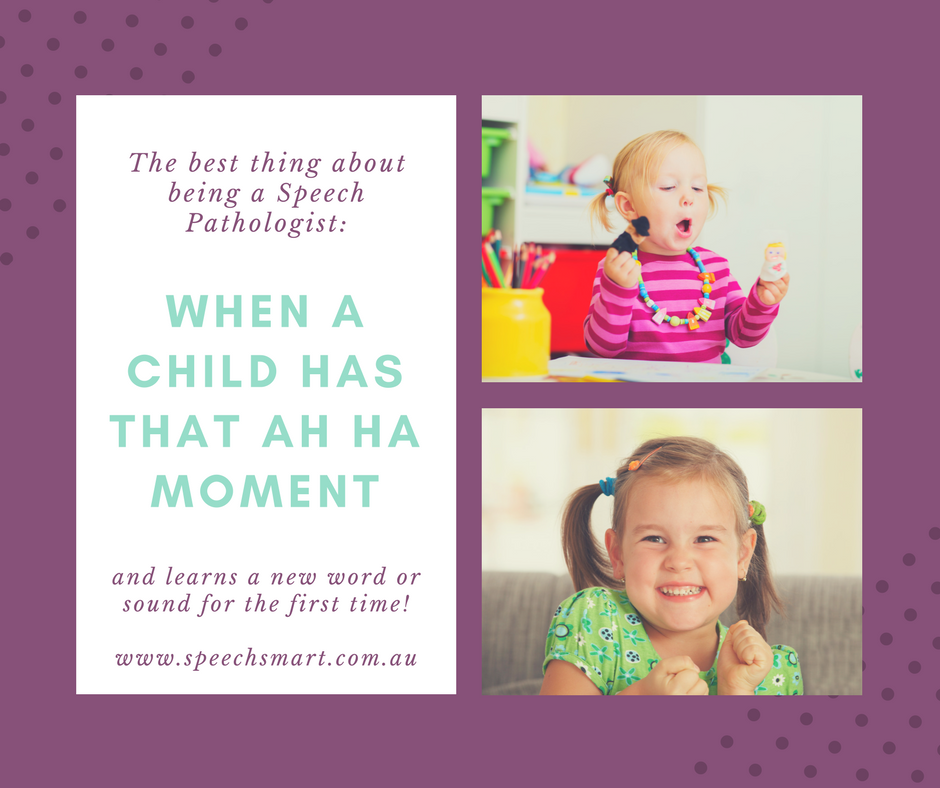
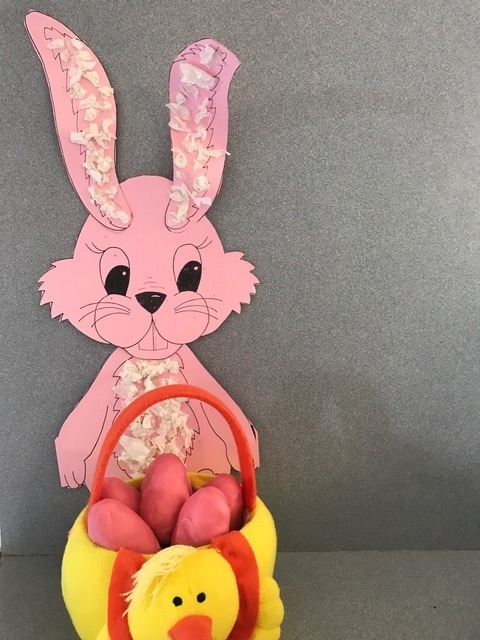
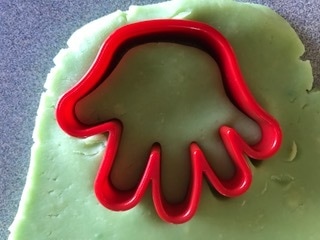
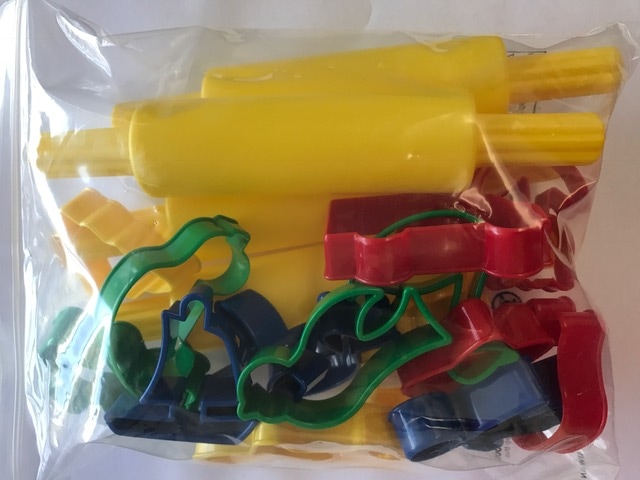
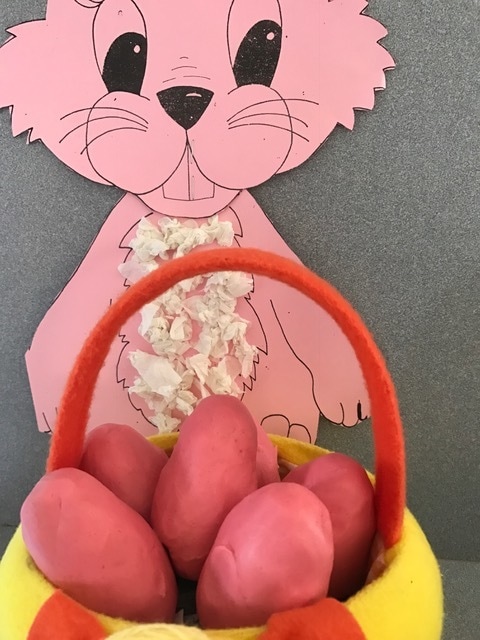
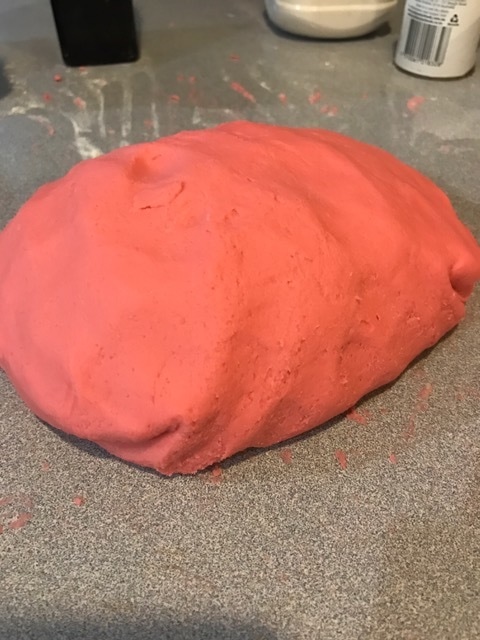
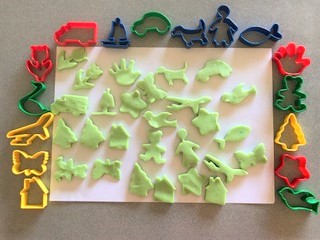
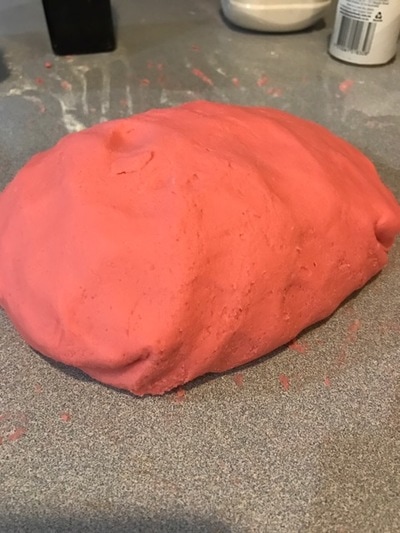
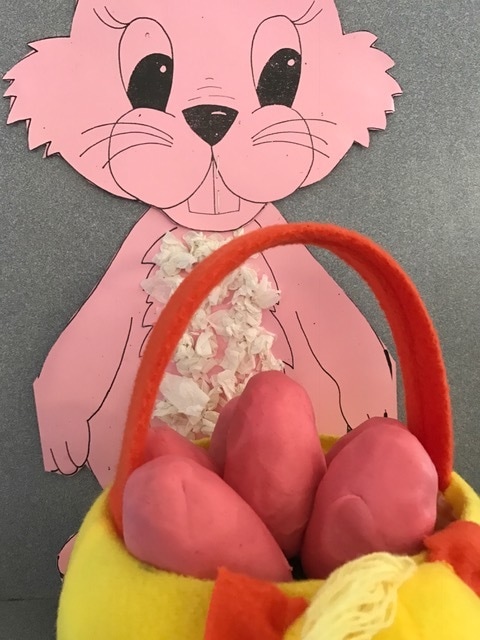
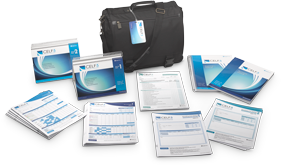
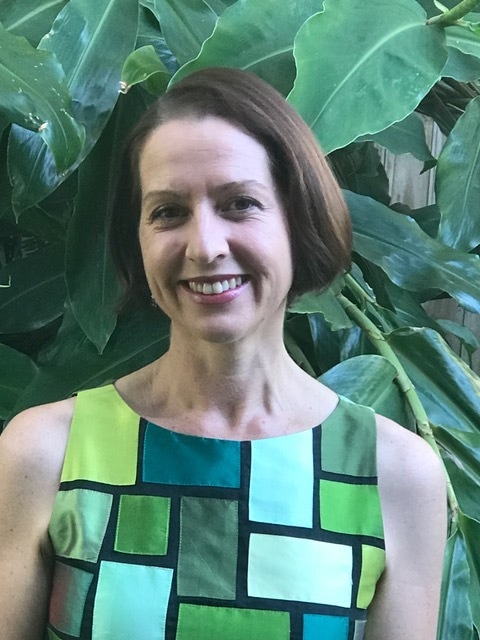
 RSS Feed
RSS Feed

